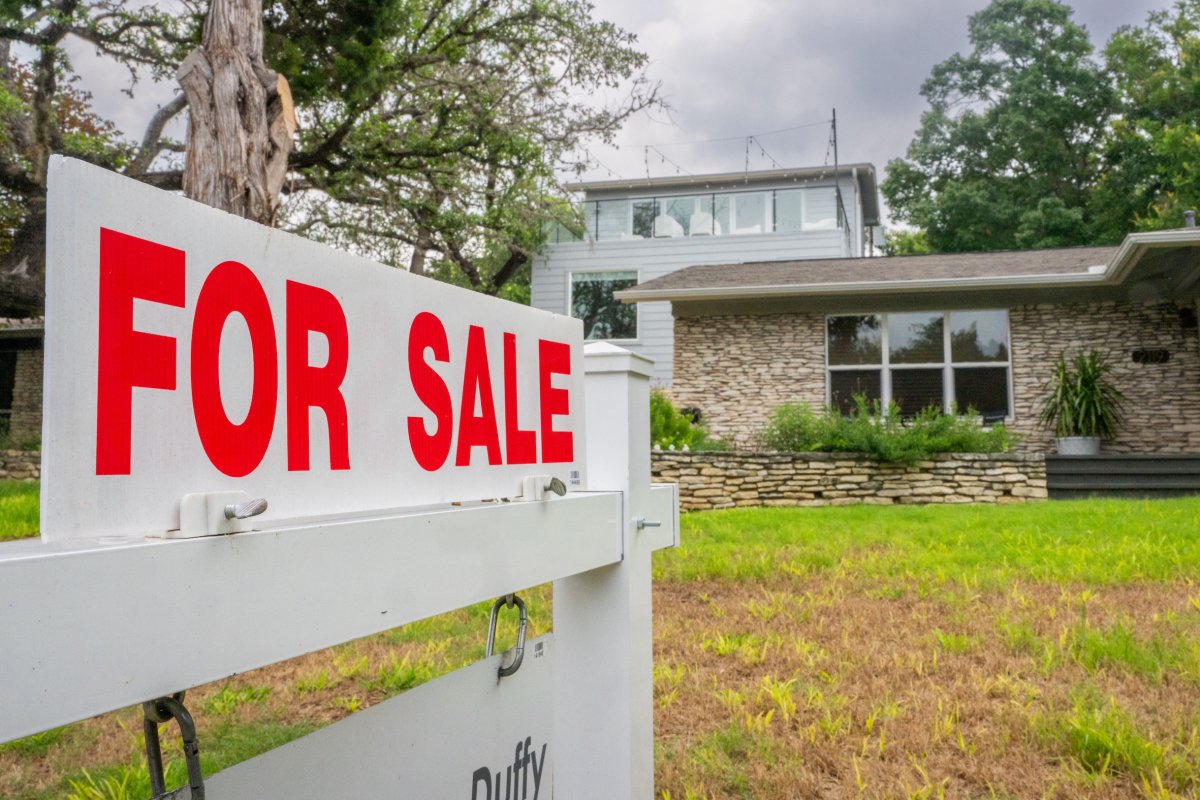The city of Austin has become “ground zero” for the downturn of the once-booming Texas housing market, according to expert Nick Gerli, CEO of real estate data platform Reventure App.
In a post published on X, formerly Twitter, on Monday, Gerli pointed out that home values in the Texas capital were now down “by almost 20 percent” from their pandemic peak, as demand dwindled while inventory grew. “Listings are now over 10,000, compared to 7,000 before the pandemic,” he wrote. “Huge supply.”
Newsweek contacted Gerli for comment by email on Tuesday morning.
Austin was the epicenter of a massive migration influx that saw millions of people move to Texas in the years of the pandemic. Between 2020 and 2022, according to U. S. Census Bureau data, Texas acquired more than 9 million new residents attracted by the state’s more affordable housing, relatively strong job market, cheaper cost of living, lack of income taxes, warm weather, and a relaxed atmosphere.

Brandon Bell/Getty Images
The flood of so many new people into Texas combined with a widespread, historic lack of housing inventory at national and state level to dramatically bring up house prices. After the pandemic, as the numbers of those moving to Texas started diminishing, demand for housing in the Lone Star State began shrinking—especially as it was no longer as affordable as it had been.
At the same time, Texas started building a lot more new homes to fix the state’s inventory gap, and homeowners who had been waiting for a better mortgage rate environment to sell their homes started feeling confident enough to enter the market.
Overall, this has led to a sudden surge in inventory in both Austin and Texas in general. “Texas housing supply has spiked to [its] highest level since at least 2017,” Gerli wrote on X. “Active listings are up 25 percent YoY, and a massive 263 percent from the pandemic low. Texas is no longer in an inventory shortage. And is now oversupplied.”
Austin has the highest inventory surplus of all Texas, according to Gerli, at 42 percent, followed by Dallas with 39 percent and San Antonio with 38 percent.
According to data from Reventure, the number of homes for sale in Austin reached 10,387 in 2024, more than at any other time in the previous seven years (the earliest date available on the website is 2017). In 2023, Austin’s for-sale inventory was 8,759, slightly higher than 8,593 the year before. During the pandemic, between 2020 and 2021, the city’s for sale inventory was just below 4,000.
Gerli believes that the huge rise in for-sale inventory in Texas is due to homebuilders and investors “beginning to liquidate out of this market,” as he wrote on X. “Investors are having difficulty earning cash flow due to high prop taxes and stagnating rents. Builders are needing to do big markdowns to sell houses, which is hurting the resale market.”
Despite the rise in inventory, home prices are still higher in Austin than many can afford. The average Austin house price was $553,275 as of September, according to property broker Redfin’s latest data, up 1.5 percent from a year earlier. At the state level, the average Texas home went for a median sale price of $343,800 in the same month, according to Redfin, down 0.44 percent year over year.




